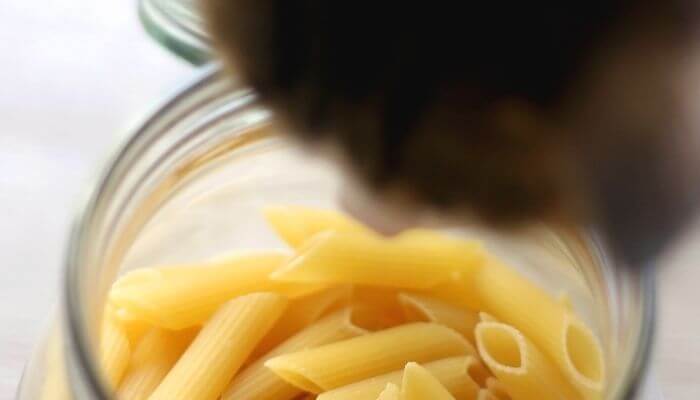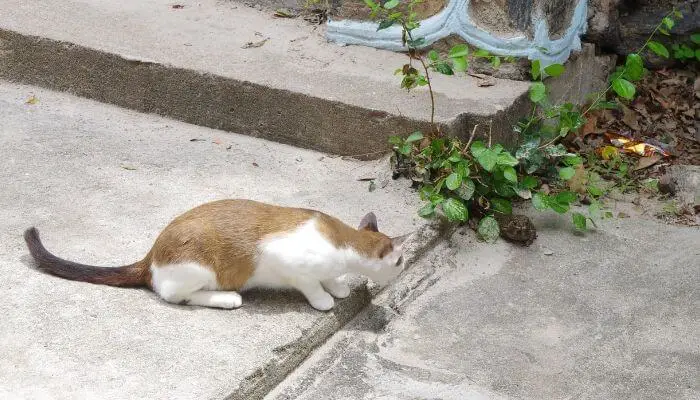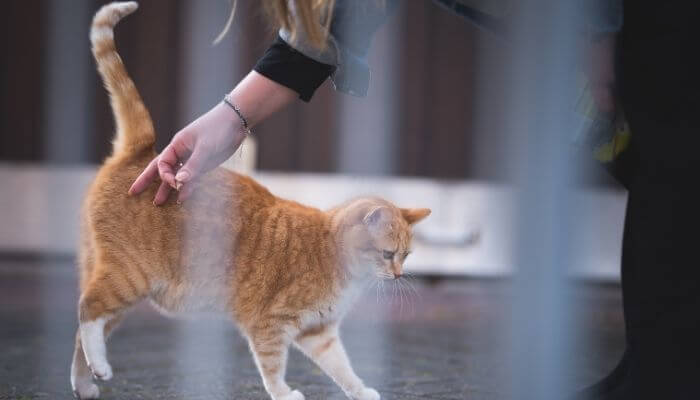Not exactly.
If you have had a cat for a while, you probably know that cats are obligate carnivores.
This means that pasta and other carb-rich foods have no place in their diets.
It would be incorrect to assume that cats can eat lasagna simply because one of its ingredients is meat.
However, if you use no condiments, spices, or seasonings, you can feed the meat from your lasagna to your cat.
But no one really prepares tasteless lasagna, so it wouldn’t be far-fetched to assume that most dishes of this type are actually unsafe for cats.
The reason some cats like lasagna is that the meaty smell and taste could be appealing to them.
Contents
Common Ingredients in Lasagna
Some of the most typical ingredients of this dish are the following:
- Meat
- Tomatoes
- Cheese
- The actual pasta
- Garlic
- Onion
- Salt or other spices
Tomatoes are not a recommended food for cats as they contain the toxin solanine. This can cause nausea, diarrhea, vomiting, cardiac dysrhythmia dizziness and more.
Salt is dangerous for all pets, including dogs, not just cats. In time, it can lead to the development of risky cardiovascular conditions. This is the main reason why salty foods including french fries and lunch meats should not be given to cats.
Garlic and onion should never be fed to cats, whether raw or cooked. In fact, all of the members of the Allium family, which also includes chives and leeks, are poisonous to cats and dogs. This is the one reason why you should be wary of allowing your cat to eat foods such as hummus.

Garlic is great for people as it does have some antiseptic properties however in cats, all Allium greens are dangerous, and they can lead to symptoms ranging from breathing difficulties to vomiting and diarrhoea.
Excessive garlic consumption could kill your cat!
Cheese is another common ingredient in lasagna. If you didn’t know, most adult cats are, in fact, lactose-intolerant, although they might enjoy drinking milk on occasion.
Moreover, cheese is often very rich in fat, which can cause a variety of digestive problems, the main of which can be diarrhoea.
Is Lasagna Bad For Cats?
The likelihood of this food being dangerous and putting your cat’s health and even life at risk is quite high. As such, we recommend that you avoid feeding it to your cat.
What if you do your best at cooking the safest lasagna for cats?
You can definitely try, but that would mean that you shouldn’t use the world-known white sauce utilized for cooking this dish, as well as a range of other ingredients.
You’d have to take out the garlic and any other spices, condiments, and seasonings, and you’d also have to avoid adding tomatoes or tomato sauce to it.
Cutting out the cheese is also recommended.
All of these changes would result in a quite unappealing lasagna for you and your family, so it actually makes more sense to give your cat the diet that she needs.
Can Cats Eat Lasagna Pasta Sheets?
No.
Cats should not eat pasta, bread, flatbread, or anything that might be rich in grains or carbs. Most of their diet should be composed of protein and fat, so the pasta sheets should never be fed to them.
On top of that, cats are not capable of processing high-carb foods, which may lead to digestive complications such as bloat or vomiting.

Out of all of the feline categories that lasagna sheets can be dangerous for, diabetic cats are the most likely to develop severe symptoms.
If your cat has been experiencing constipation, you might think that giving her fiber-rich foods might be the right way of going about things.
And while this is not exactly false, there are safe fiber-rich foods and unsafe ones.
One type of food that doesn’t affect your cat’s health and that’s also great for improving her digestive transit is pumpkin — but not wheat or corn.
Can Cats Eat Vegan Lasagne?
The answer to this question is also no.
As previously mentioned, some of the typical lasagna ingredients can be unsafe.
But the truth is that vegan diets for cats are almost never healthy as they contain protein from alternative sources such as peas or soy, which cats should not eat.
What To Do If Your Cat Eats Lasagna
Since lasagna isn’t exactly the healthiest food that your cat can have, and it also contains a series of ingredients that could be risky, the best thing to do is to go to the vet clinic as soon as possible.
Lasagna toxicity can depend on a number of factors, such as what you have put into the dish, your cat’s size, and the amount that your cat has ingested.
If you know for sure that your cat has had a lot of lasagna, you should consult your veterinarian right away.
If, on the other hand, your cat has had less than half of a teaspoon of the dish, you can wait for half an hour and see what happens.
Such small quantities are usually not dangerous and do not cause any digestive distress or other health problems.
Nevertheless, in some situations, even very small amounts can be risky, such as if you have a kitten or a geriatric cat that might be suffering from chronic conditions.
Also Read:
Can Cats Eat Kidney Beans?
Can Cats Eat Quorn?
Can Cats Eat Prawns?
Conclusion
While lasagna in itself, as a whole, is not exactly dangerous, some of its ingredients can put your cat’s health and even life at risk.
You can ask your vet about what human foods cats are allowed to eat.
But these days, most of the commercial diets that you will come across are safe to feed to your cat, and a low-carb and grain-free option is even healthier.
Finally, don’t forget that the main and best ingredient in any cat’s diet should be protein.
Small amounts of fat are also acceptable, but carbs are almost always a no-go.








Leave a Comment